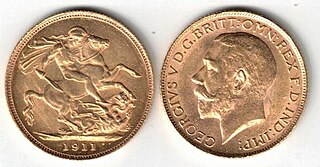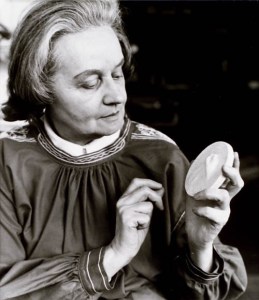Related Research Articles

The Royal Canadian Mint is the mint of Canada and a Crown corporation, operating under an act of parliament referred to as the Royal Canadian Mint Act. The shares of the mint are held in trust for the Crown in right of Canada.

In Canada, a dime is a coin worth ten cents. It has been the physically smallest Canadian coin since 1922; it is smaller even than the country's penny, despite its higher face value. According to the Royal Canadian Mint, the official national term of the coin is the 10-cent piece, but in practice, the term dime predominates in English-speaking Canada. It is nearly identical in size to the American dime. Unlike its American counterpart, the Canadian dime is magnetic due to a distinct metal composition. From 1968 to 2000, it was composed entirely of nickel, and since 2001, it has consisted of a steel core with plating composed of layers of nickel and copper.

The Canadian fifty-cent coin is a Canadian coin worth 50 cents. The coin's reverse depicts the coat of arms of Canada. At the opening ceremonies for the Ottawa branch of the Royal Mint, held on January 2, 1908, Governor General Earl Grey struck the Dominion of Canada's first domestically produced coin. It was a silver fifty-cent coin bearing the effigy of King Edward VII.
The Canadian Silver Maple Leaf is a silver bullion coin that is issued annually by the Government of Canada since 1988. It is produced by the Royal Canadian Mint.
The coins of Canada are produced by the Royal Canadian Mint and denominated in Canadian dollars ($) and the subunit of dollars, cents (¢). An effigy of the reigning monarch always appears on the obverse of all coins. There are standard images which appear on the reverse, but there are also commemorative and numismatic issues with different images on the reverse.
The Charlton Press is a book publishing company that produces pricing guides as well as other books on related topics, including collectibles and porcelain figures. The company's first title was Catalogue of Canadian Coins, Tokens & Fractional Currency, published in 1952, and contained all coins used as circulating tender in Canada from 1858 until present.
One of the most profitable aspects of the Royal Canadian Mint (RCM) is its numismatic product line. The first numismatic coin from the RCM was arguably the 1935 dollar commemorating the Silver Jubilee of King George V. Though intended for circulation, it was the first Canadian coin commemorating an event. The decision to issue this coin was made in October 1934 by Prime Minister R. B. Bennett. There were economic and patriotic motivations for the release of a silver dollar, including a hope to boost the silver mining industry. In future years, the silver dollar would have a more emotional meaning for many Canadians because it was also the first coin to have the Voyageur motif on its reverse.
Since the 1976 Summer Olympics in Montreal, the Royal Canadian Mint has struck Summer and Winter Olympic coins to mark games held in Canada.

Work on the coinage tools for the Newfoundland five-cent coin began after the one-cent coin, so the coin has no legend. The first pattern is derived from the New Brunswick obverse with Newfoundland substituted for New Brunswick.

The Newfoundland ten cent coins exist as a bronze pattern with the adopted obverse from the New Brunswick coin. This design adoption is similar to that used for Newfoundland five cent coins.
By 1954, a new trend was beginning to emerge for the Royal Canadian Numismatic Association as annual meetings evolved into annual conventions. Working with the Toronto Coin Club as host, the first such convention was held in Toronto in 1954. The conventions offered an agenda of educational forums, bourse activity, competitive exhibits with awards to the winners, and a closing banquet, with the highlight being a special guest speaker.. It was also in 1954 that the association issued its first ever medal to commemorate the event. The tradition of an annual convention and a convention medal continues to this very day.
The Canadian silver dollar was first issued by the Royal Canadian Mint in 1935 to commemorate the Silver Jubilee of King George V. The coin's reverse design was sculpted by Emanuel Hahn and portrays a voyageur and a person of Indigenous descent paddling a birch-bark canoe. The faint lines in the background represent the Northern Lights. The voyageur design was used on the dollar until 1986. It was then replaced with the 1987 Canadian 1-dollar coin. 1967 marked the end of the silver dollar as a business strike, or a coin issued for circulation. After 1967, the dollar coin was made of nickel, except for non-circulating commemorative issues for the collector market, which continue to contain silver.

The Ottawa Mint sovereign is a British one pound coin minted between 1908 and 1919 at the Ottawa Mint (known today as the Ottawa branch of the Royal Canadian Mint. This has augmented debate among Canadian numismatists because some view these pieces as Canadian while others view them as British and thus distinct from the decimal series of Canadian coinage. Since the opening of the Ottawa Mint, the Dominion of Canada's government wanted to produce decimal gold coins. As it was a branch of the Royal Mint, it was obligated to mint sovereigns on request. When sovereigns were requested, it was usually for export causes. Gold used to produce sovereigns initially came from British Columbia or the Yukon.
Although the first Olympic coin can be traced back to 480 BC, the modern Olympics did not see its first commemoratives until 1951. The original concept of Olympic coins was that the Greeks believed that coins brought the general public closer to the Olympic games. The premise was that those who could not attend the games could at least have a tangible souvenir of the event.
From 2000 to 2019, there were various technological achievements in Canadian coin minting. The first RCM gold coin to be directly laser etched was the $100 Gold Leduc Oil Fields coin from 2002. The technique would later be used for the 2003 $100 Gold Marquis Wheat coin and the 2004 $20 Iceberg coin. In 2001, the RCM achieved innovation with the 2001 Marconi $5 silver coin. It was the first RCM coin to include a direct lasered finish. One of the technological breakthroughs for the RCM involved the 2006 Canadian Achievement series silver coin featuring Colonel Chris Hadfield. It was the first Canadian coin to be completely sculpted using computer software.
The Royal Canadian Mint has made coins with various themes. Most recently, ice hockey has been used for many numismatic releases. The first known ice hockey coin was for the 1988 Winter Olympics. Issued on February 25, 1986, the coin featured a goalie on the coin. Edge lettering was also used for the coin, the first time that it was used on silver coins.
Yvon Gariepy was the President of the Royal Canadian Mint from 1975 to 1981. In later years, he worked for Canada Post. Gariepy was a professional member of the Order of Engineers of Quebec, Professional Corporation of Urbanists of Quebec, Canadian Institute of Planners and the Institute of the Public Administration of Canada.

Dora de Pédery-Hunt, LL.D. was a Hungarian-Canadian sculptor who designed medals and coins. She was the first Canadian citizen to design an effigy for Queen Elizabeth II.
The quarter, short for quarter dollar, is a Canadian coin worth 25 cents or one-fourth of a Canadian dollar. In addition to being used as circulating currency, this denomination has also been used to make commemorative coins struck by the Royal Canadian Mint. Ordinarily featuring a caribou, the quarter has the most commonly altered reverse in Canada and is the usual venue for commemorative issues. Two main types of commemorative coins have been issued; those for circulation and those for collectors. This article does not cover NFL related commemoratives or Olympic coins as those quarters can be found in their respective pages.
References
- ↑ Canada Post Corporation. Canada's Stamp Details, Vol. 11, No. 1, 2002, p. 12-14.
- ↑ Canada Post Corporation. Canada's Stamp Details, Vol. 12, No. 1, 2003, p. 12, 14-15.
- 1 2 "Royal Canadian Mint Produces Medals for 2009 IIHF World Junior Hockey Championship | the Royal Canadian Mint".
- 1 2 The Charlton Standard Catalogue of Canadian Coins, 60th Anniversary Edition, 2006, p.230, by W.K. Cross, The Charlton Press, Toronto, ISBN 0-88968-297-6
- ↑ The Charlton Standard Catalogue of Canadian Coins, 60th Anniversary Edition, 2006, p.231, by W.K. Cross, The Charlton Press, Toronto, ISBN 0-88968-297-6
- ↑ The Charlton Standard Catalogue of Canadian Coins, 60th Anniversary Edition, 2006, p.232, by W.K. Cross, The Charlton Press, Toronto, ISBN 0-88968-297-6
- 1 2 The Charlton Standard Catalogue of Canadian Coins, 60th Anniversary Edition, 2006, p.233, by W.K. Cross, The Charlton Press, Toronto, ISBN 0-88968-297-6
- ↑ The Charlton Standard Catalogue of Canadian Coins, 60th Anniversary Edition, 2006, p.234, by W.K. Cross, The Charlton Press, Toronto, ISBN 0-88968-297-6
- 1 2 The Charlton Standard Catalogue of Canadian Coins, 60th Anniversary Edition, 2006, p.235, by W.K. Cross, The Charlton Press, Toronto, ISBN 0-88968-297-6
- 1 2 3 4 The Charlton Standard Catalogue of Canadian Coins, 60th Anniversary Edition, 2006, p.236, by W.K. Cross, The Charlton Press, Toronto, ISBN 0-88968-297-6
- ↑ The Charlton Standard Catalogue of Canadian Coins, 60th Anniversary Edition, 2006, p.237, by W.K. Cross, The Charlton Press, Toronto, ISBN 0-88968-297-6
- 1 2 3 The Charlton Standard Catalogue of Canadian Coins, 60th Anniversary Edition, 2006, p.238, by W.K. Cross, The Charlton Press, Toronto, ISBN 0-88968-297-6
- ↑ The Charlton Standard Catalogue of Canadian Coins, 60th Edition, 2006, p. 249, W. K. Cross, The Charlton Press, Toronto, ON, ISBN 0-88968-297-6.
- ↑ The Charlton Standard Catalogue of the Canadian Numismatic Association’s Medals and Awards, p. 52, R. Brian Cornwell, The Charlton Press, Toronto, Ontario, ISBN 0-88968-100-7.
- ↑ The Charlton Standard Catalogue of the Canadian Numismatic Association’s Medals and Awards, p. 54, R. Brian Cornwell, The Charlton Press, Toronto, Ontario, ISBN 0-88968-100-7.
- ↑ The Charlton Standard Catalogue of the Canadian Numismatic Association’s Medals and Awards, p. 56, R. Brian Cornwell, The Charlton Press, Toronto, Ontario, ISBN 0-88968-100-7.
- ↑ The Charlton Standard Catalogue of the Canadian Numismatic Association’s Medals and Awards, p. 61, R. Brian Cornwell, The Charlton Press, Toronto, Ontario, ISBN 0-88968-100-7.
- 1 2 The Charlton Standard Catalogue of the Canadian Numismatic Association’s Medals and Awards, p. 66, R. Brian Cornwell, The Charlton Press, Toronto, Ontario, ISBN 0-88968-100-7.
- 1 2 "The Story behind medals | the Royal Canadian Mint".
- 1 2 The CN Journal, The Official Publication of the Canadian Numismatic Association, Markham, Ontario, Vol. 53, No. 1, January–February 2008, pp. 30.
- ↑ http://www.geocities.com/erik_mccrea/linksGH.html [ dead link ]
- ↑ "EATON $50 COINS". Archived from the original on 2008-01-01. Retrieved 2008-01-26.
- ↑ Canadian Coin News, Volume 47, No. 19, January 5 to 18, 2010, p.17
- ↑ "Canadian Tire launches limited edition $1 Canadian Tire Money coin - News: Canadian Press business news - Money - MSN CA". Archived from the original on 2009-12-05. Retrieved 2009-12-02.
- ↑ Charlton Standard Catalogue of Canadian Coins, 60th Edition, 2006, p.261, ISBN 0-88968-297-6
- 1 2 3 Highest Award for gallanty unveiled, Canadian Coin News, June 24, 2008, p. 14, Trajan Publishing Corporation, St. Catharines, Ontario, Canada.
- ↑ Medal honours sacrifices, Mario Cywinski, pp. 11, Canadian Coin News, Vol. 46. No. 13, October 14 to 27, 2008
- ↑ Medal honours sacrifices, Mario Cywinski, pp. 1, Canadian Coin News, Vol. 46. No. 13, October 14 to 27, 2008
- ↑ The CN Journal, The Official Publication of the Canadian Numismatic Association, Markham, Ontario, Vol. 53, No. 1, January–February 2008, pp. 26-27.
The 10 oz Elvis Presley medal has no dollar denomination. Furthermore, these medals have a serial number stamped on the outer edge.